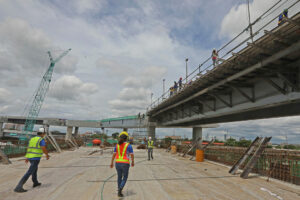DELAYS in completing flagship infrastructure projects have outsized potential to pose a drag on economic growth, GlobalSource Partners said.
“With the new projects, and many others still to be completed, the list of flagship projects continues to lengthen; the likelihood of everything being completed becomes uncertain,” GlobalSource country analysts Diwa Guinigundo and Wilhelmina Manalac said in a brief.
“Unless the issue of infrastructure is decisively and quickly addressed, it may instead drag the momentum of growth down.”
In its 16th meeting, the National Economic and Development Authority (NEDA) Board chaired by President Ferdinand R. Marcos, Jr. approved projects worth P66.37 billion, including infrastructure, rail and agriculture works.
While GlobalSource noted the role of these projects in increasing productivity and foreign investment inflow, it noted the government’s delayed implementation of last year’s approved projects.
“In 2023, of the 13 projects aimed at establishing physical connectivity, water resources, digital connectivity and health, NEDA reported as of end-November 2023 that only one was completed in 2023 in the Visayas,” according to the analysts.
The remaining 12 projects are expected to be completed this year, with “multiplier effects” in key issues like movement of goods and services, disaster reduction, and better water resources, public health and digital connectivity, they added.
As of today, 185 flagship infrastructure projects worth P9.14 trillion are in the pipeline, according to NEDA’s online portal.
Meanwhile, GlobalSource also called on the government to ramp up efforts to address “glaring” issues in the education sector.
“With the declining quality of education in the Philippines based on an international assessment by PISA (the Program for International Student Assessment), the country is suffering from the so-called ‘poverty of education,’” they said.
“Arresting it involves greater focus on the substance of education and how students are taught.”
PISA found that Filipino students are effectively five to six years behind in learning competencies, the Department of Education said last year. — Beatriz Marie D. Cruz
